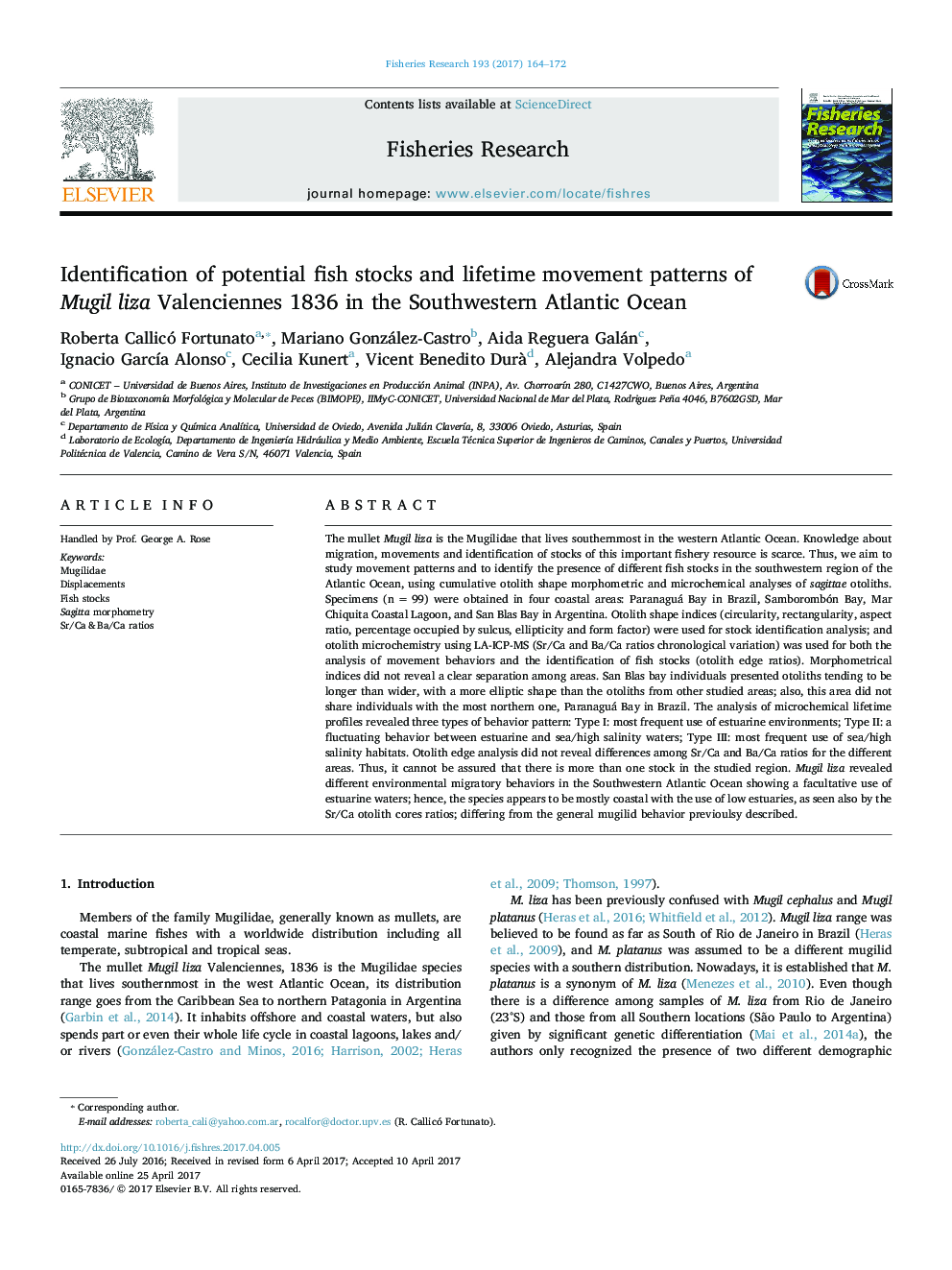| کد مقاله | کد نشریه | سال انتشار | مقاله انگلیسی | نسخه تمام متن |
|---|---|---|---|---|
| 5765485 | 1626777 | 2017 | 9 صفحه PDF | دانلود رایگان |

- Otolith microchemistry analysis revealed three migration patterns for Mugil liza.
- Mugil liza specimens did not use freshwater environments in the southwestern Atlantic.
- Only one Mugil liza stock was identified in the studied southwestern Atlantic area.
The mullet Mugil liza is the Mugilidae that lives southernmost in the western Atlantic Ocean. Knowledge about migration, movements and identification of stocks of this important fishery resource is scarce. Thus, we aim to study movement patterns and to identify the presence of different fish stocks in the southwestern region of the Atlantic Ocean, using cumulative otolith shape morphometric and microchemical analyses of sagittae otoliths. Specimens (n = 99) were obtained in four coastal areas: Paranaguá Bay in Brazil, Samborombón Bay, Mar Chiquita Coastal Lagoon, and San Blas Bay in Argentina. Otolith shape indices (circularity, rectangularity, aspect ratio, percentage occupied by sulcus, ellipticity and form factor) were used for stock identification analysis; and otolith microchemistry using LA-ICP-MS (Sr/Ca and Ba/Ca ratios chronological variation) was used for both the analysis of movement behaviors and the identification of fish stocks (otolith edge ratios). Morphometrical indices did not reveal a clear separation among areas. San Blas bay individuals presented otoliths tending to be longer than wider, with a more elliptic shape than the otoliths from other studied areas; also, this area did not share individuals with the most northern one, Paranaguá Bay in Brazil. The analysis of microchemical lifetime profiles revealed three types of behavior pattern: Type I: most frequent use of estuarine environments; Type II: a fluctuating behavior between estuarine and sea/high salinity waters; Type III: most frequent use of sea/high salinity habitats. Otolith edge analysis did not reveal differences among Sr/Ca and Ba/Ca ratios for the different areas. Thus, it cannot be assured that there is more than one stock in the studied region. Mugil liza revealed different environmental migratory behaviors in the Southwestern Atlantic Ocean showing a facultative use of estuarine waters; hence, the species appears to be mostly coastal with the use of low estuaries, as seen also by the Sr/Ca otolith cores ratios; differing from the general mugilid behavior previoulsy described.
Journal: Fisheries Research - Volume 193, September 2017, Pages 164-172